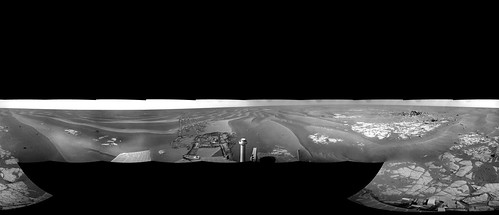QUOTE (PaulM @ Mar 13 2009, 01:30 AM)

The question that I want to ask is whether CRISM has revealed clay deposits any closer to Oppy's current location. I would not be suprised if a small quantity of clay was found at the bottom of Endeavour crater given that Endeavour is very deep and there may be clay below the sulphate deposits throughout this whole area.
Click to view attachmentAbove is image of highest value of three different CRISM filters, as an overlay on the IR image, red is high, light green is minimum of zero.
I am definitely not a specialist in this, but to me the answer seems to be 'No'.
Click to view attachmentChemicals detected by CRISM along the route of Oppy, with the filters which might indicate clays, this is an average of all CRISM images available for this area. However note, that they also might indicate sulfates, which does seem to me more likely. Once again, I'm not a specialist, these are just the 'raw values' as measured. Problem with CRISM is that 'getting the raw values' is easy, but interpreting them is really something different, there are a lot of other factors which are influencing the measurements and it's far, far beyond me to give a clear interpretation of these measurements, I just collect the data

Also note that CRISM coverage is far from complete, they are just 'pinpricks' along the surface of Mars, if would take many,many, more years to cover the whole surface.
Regards,
Geert.


